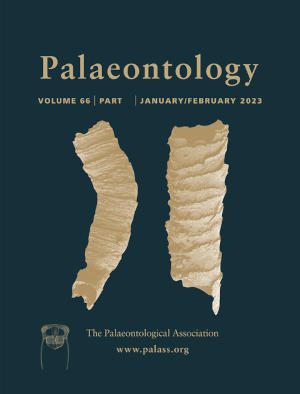Article: Testing the success of palaeontological methods in the delimitation of clam shrimp (Crustacea, Branchiopoda) on extant species
Publication: Palaeontology
Volume:
66
Part:
1
Publication Date:
2023
Article number:
e12634
Author(s):
Manja Hethke, Kai Hartmann, Matthias Alberti, Theresa Kutzner, and Martin Schwentner
Abstract
Abstract Fossil spinicaudatan taxonomy heavily relies on carapace features (size, shape, ornamentation) and palaeontologists have greatly refined methods to study and describe carapace variability. Whether carapace features alone are sufficient for distinguishing between species of a single genus has remained untested. In our study, we tested common palaeontological methods on 481 individuals of the extant Australian genus Ozestheria that have been previously assigned to ten species based on genetic analysis. All species are morphologically distinct based on geometric morphometrics (p ≤ 0.001), but they occupy overlapping regions in Ozestheria morphospace. Linear discriminant analysis of Fourier shape coefficients reaches a mean model performance of 93.8% correctly classified individuals over all possible 45 pairwise species comparisons. This can be further increased by combining the size and shape datasets. Nine of the ten examined species are clearly sexually dimorphic but male and female morphologies strongly overlap within species with little influence on model performance. Ornamentation is commonly species-diagnostic; seven ornamentation types are distinguished of which six are species-specific while one is shared by four species. A transformation of main ornamental features (e.g. from punctate to smooth) can occur among closely related species suggesting short evolutionary timescales. Our overall results support the taxonomic value of carapace features, which should also receive greater attention in the taxonomy of extant species. The extensive variation in carapace shape and ornamentation is noteworthy and several species would probably have been assigned to different genera or families if these had been fossils, bearing implications for the systematics of fossil Spinicaudata.
